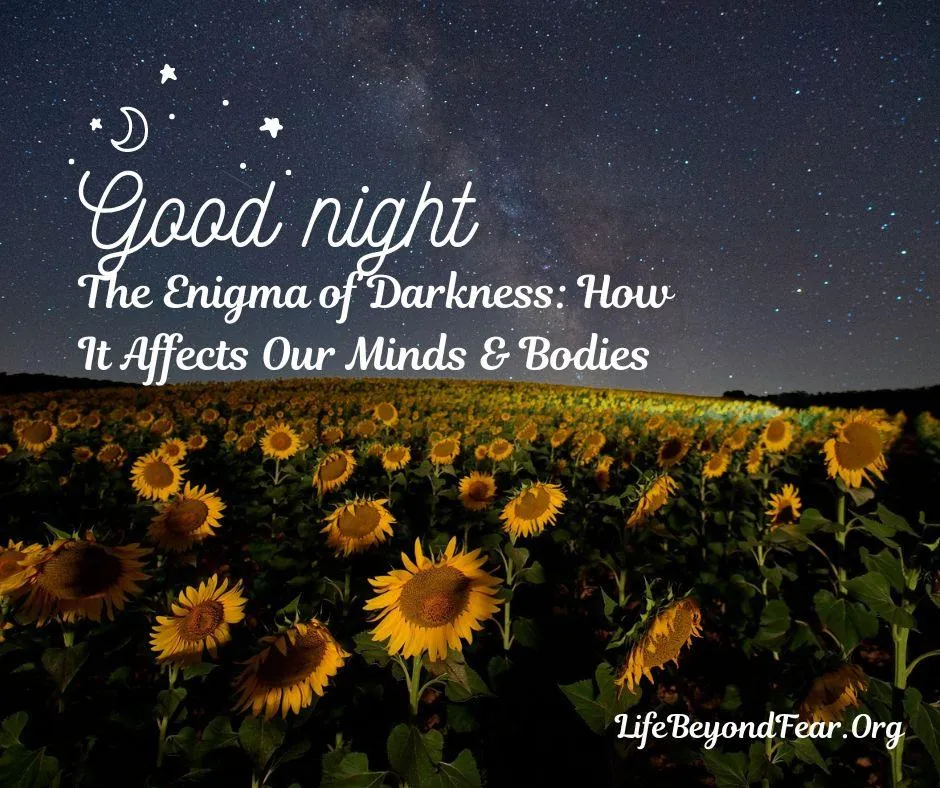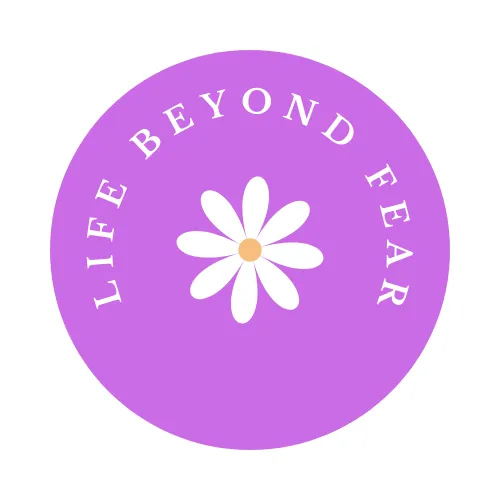There’s a whole world out there
See Newest Blogs

The Enigma of Darkness
The Enigma of Darkness: How It Affects Our Minds and Bodies
Imagine stepping into a pitch-black room—your heart races, your senses heighten, and an unshakeable sense of vulnerability creeps in.
Why do such primal reactions to darkness persist even in our modern, well-lit world?
Let's explore the profound effects of darkness on the human mind and body, from evolutionary instincts to the intricate workings of our brain.

The Evolutionary Roots of Fear
Humans, like many other animals, have evolved to be more active during daylight hours. Historically, nighttime posed more threats, such as predators and environmental hazards, fostering an evolutionary advantage to fear the dark. This fear increased survival rates, as our ancestors were more alert and cautious during these vulnerable hours.
The Limbic System: Guardian of Fear
The amygdala, part of the brain's limbic system, plays a crucial role in processing fear and triggering fight or flight responses. In darkness, our visual input is drastically reduced, making the amygdala work overtime to identify potential threats. This heightened state of alertness explains why darkness can amplify our sense of fear and anxiety.
Cognitive and Instinctual Factors
Our cognitive processes often guide us to fear the unknown. In the dark, the inability to see clearly can lead to our brain filling the void with imagined dangers. This phenomenon is enhanced by our instinctual fears, deeply rooted in the human psyche.
Physiological Responses
Darkness impacts our biology in several ways:
- Visual Limitation: Reduced visibility increases the risk of accidents, which alone can make the dark seem more threatening.
- Sleep Patterns: Various sleep patterns, such as being an early riser or a night owl, may have evolved to ensure that some members of a community were alert at all times, providing continuous protection from predators.
Trauma and Darkness
Traumatic experiences can significantly alter how an individual responds to darkness. A person who did not fear the dark as a child may develop an aversion due to a traumatic event, such as an accident or a frightening experience in the dark. This learned fear is often imprinted in the limbic system and can trigger heightened responses in similar situations.
The Fear of Accidents
Common sense dictates that the risk of accidents increases in the dark due to impaired vision. This practical fear can translate into heightened anxiety for many people, reinforcing the instinctual fear of darkness.
Understanding Children’s Fear of the Dark
Children often exhibit fear of the dark due to their vivid imaginations and a lack of understanding about the world. As they grow, increased knowledge and coping mechanisms typically help them outgrow this fear. However, if a traumatic event occurs, the fear can persist into adulthood.
In some instances, children who were once fine with the dark may develop fears later due to:
- Negative Experiences: A stressful or frightening event associated with darkness.
- Influence from Others: Observing other children or adults exhibiting fear of the dark.
Strategies to Manage Overactive Imagination and Fear of the Dark
Reassurance and Communication:
Talk to Your Child: Address their fears directly. Ask them to describe what scares them and reassure them that they are safe.
Create a Safe Space: Ensure their bedroom feels safe and comfortable.
Nighttime Routines:
Consistent Bedtime Routine: Create a calm and predictable routine before bed to help them feel secure.
Bedtime Stories: Read soothing stories that promote positivity and relaxation, avoiding scary tales that might feed their imagination.
Practical Solutions:
Soft Lighting: Use a nightlight to make the room less intimidating without disturbing sleep.
Organised Space: Keep the room tidy and ensure objects like clothes or toys are stored away to minimise shadows and mysterious shapes that may trigger a child's overactive imagination.
Creative Outlets:
Art and Play: Encourage creative activities during the day where they can express and manage their imagination through drawing, storytelling, or role-play.
Positive Visualisation: Teach them to visualise pleasant scenes or adventures before falling asleep.
Empowerment Techniques:
Monster Spray: Make a fun 'monster spray' with water and a little lavender oil, and let them use it around their room to 'keep monsters away.'
Imagination Mastery: Encourage them to be the hero in their imaginative stories, turning scary scenarios into adventures where they conquer their fears.
Diagnosis and Professional Help
While an overactive imagination is a normal part of childhood development, extreme fear or anxiety might be part of a broader issue such as:
Generalised Anxiety Disorder (GAD): Chronic and excessive worry that might include fear of the dark.
Specific Phobia: Intense, irrational fears about specific objects or situations.
If the fear significantly impacts the child's daily life and persists despite trying different strategies, it might be helpful to consult a pediatrician or child psychologist for a formal assessment and tailored support.
Maintaining Fear of the Dark in Adulthood
Psychological Factors:
Imagination: An active imagination can continue from childhood to create scenarios that amplify fear, transforming ordinary shadows and sounds into perceived threats.
Cognitive Patterns: Habitual thinking patterns that were established during childhood can persist, meaning the brain might default to fear-inducing thoughts in dark environments.
Conditioned Responses: Experiences and behaviours from childhood can become deeply ingrained, leading to automatic fear responses in the dark even as an adult.
How Sleep Patterns Have Evolved: The Circadian Rhythm
Humans have evolved with a natural sleep-wake cycle known as the circadian rhythm, regulated by the brain's hypothalamus and influenced by environmental light. This rhythm ensures that our bodies know when it is time to sleep and wake, optimising our physical and mental functions.
In ancient times, having individuals with different sleep patterns (early risers and night owls) within a community likely served as a survival mechanism, ensuring that someone was always awake to watch for danger. This trait has persisted, explaining modern variations in sleep cycles.
Managing Nyctophobia: Overcoming Extreme Fear of the Dark as an Adult
Extreme fear of the dark can be a debilitating experience, but there are several effective strategies to help manage and overcome it. Here are some practical steps:
Strategies to Manage and Overcome the Fear
To understand and address an extreme fear of darkness, it’s crucial to adopt a multifaceted approach:
1. Gradual Exposure Therapy: Gradual and controlled exposure to darkness can help desensitise the fear response. Start with dim lighting and gradually move to complete darkness.
2. Cognitive Behavioral Therapy (CBT): This therapy helps in restructuring irrational beliefs and fears about darkness, replacing them with more balanced and realistic thoughts.
3. Relaxation Techniques: Practices such as deep breathing, meditation, and progressive muscle relaxation can help manage anxiety associated with darkness.
4. Mindfulness: Being present and non-judgemental about one's feelings when in the dark can reduce the fear response.
5. Safe Spaces: Use a familiar and safe environment for your exposure therapy. For instance, your bedroom or living room would be better than an unknown space.
6. Thought Records: Keep a journal of your thoughts when you feel anxious about darkness. This allows you to analyse and counter negative thoughts.
7. Support Groups: Sharing your experiences with others can provide emotional support and practical advice.
8. Professional Support: Seeking the help of a therapist or counsellor can provide tailored strategies and emotional support.
Enhance Your Sleeping Environment
Comforting Elements: Surround yourself with comforting objects like a favourite blanket or stuffed animal to provide a sense of security. If a stuffed toy worked for you as a child, why not as an adult? Remember, most fears are cultivated during childhood and continued into adulthood. So, soothing your inner child will help.
White Noise Machines: These can mask unsettling noises and create a more soothing environment.
Consistent Routine: Establish a calming bedtime routine. Consistency can enhance your circadian rhythm, making nighttime feel less intimidating.
Empower Yourself With Knowledge
Education: Learn about the physiological and psychological aspects of fear. Understanding your fear can often make it feel more manageable.
Lighting Control: Use manageable lighting options like dimmer switches, which can help you feel more in control of your environment.
Explore: Be open to exploring possibilities for developing a healthy attitude towards self-care. For instance, the act of taking care of yourself can create a healthy sense of control over your environment.
Conclusion
The interplay between darkness and human psychology is multifaceted, involving evolutionary instincts, cognitive processes, and physiological responses.
Whether rooted in our limbic system, the fear of the unknown, or practical concerns like the risk of accidents, our reactions to darkness are deeply embedded in the human experience.
Understanding these factors not only sheds light on why we fear the dark but also helps us navigate these primal instincts in our contemporary lives.
Reflection
Exploring the Roots of Extreme Fear
To understand the roots of an excessive fear of darkness, one might explore:
- Personal History: Reflect on childhood experiences and any traumatic incidents linked with darkness.
- Family Patterns: Investigate if family members exhibit similar fears, suggesting a learned behaviour.
- Cognitive Patterns: Identify specific thoughts and beliefs about darkness that cause anxiety.
- Emotional Reactions: Notice how your body and emotions respond to darkness.

Copyright ©LifeBeyondFear.Org. All Rights Reserved.
Unlock the secrets to improving relationships at work, at home, and most importantly, with yourself. Discover the transformative power of meaningful connections and self-understanding.
